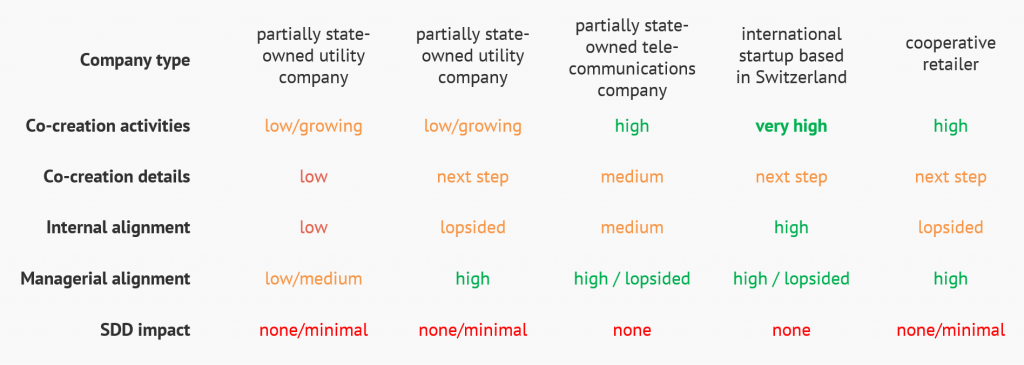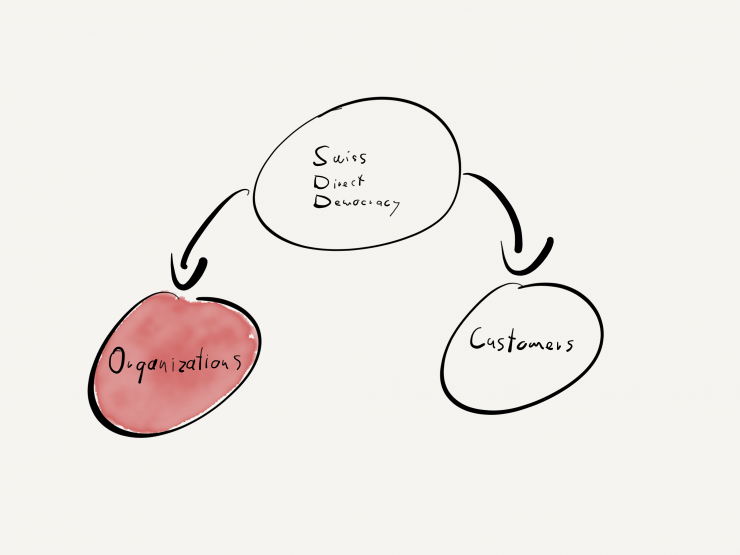As you could see in the introduction and Swiss direct democracy sections, co-creation is engraved into Swiss politics. Citizens know they have the right and opportunity to influence decisions. Government has ben shaped by this. And parliament members are quite different than in other countries.
But did this co-creation practice flow over to other aspects of society? In his book, ‘Swiss Democracy’, Wolf Linder argues that
“An unbiased outside observer, however, would probably be astonished that the values of direct democracy have not had more impact on Swiss society beyond politics.”
Well that’s disappointing. Speaking to power, and listening to constituents is so central in Swiss democracy. This could have carried over into how companies are operated. Switzerland could have become ground zero for design thinking, for customer involvement, and for mature ‘voice of the customer’ efforts. But based on this quote, that didn’t happen.
Of course I wanted to test this view. So I set out to do some research on this topic in two specific areas. First, to do qualitative interviews with people responsible for service design efforts at various types of organizations. And second, among the general society.
Although my thesis includes details about the companies, the interviews have been done under a confidentiality agreement. So I will not be naming the companies, nor go into specific depth here. However, below is a table summarizing the findings.

As you can see, the bottom line is that Swiss Direct Democracy (SDD) with all its co-creation and grassroots power, has had little to no effect on how companies involve customers.
- Co-creation activities looked at processes to involve customer on company decisions
- Co-creation details (yeah, not a perfect name) looked at things such as KPIs (key performance indicators) linked to customer co-creation, motivation of customers for participation, and segmentation of the audience based on the level of their co-creation activity
- Internal alignment looked at cooperation between various departments within the organization, specifically regarding customer insights and involvement
- Managerial alignment looked at how much executives were involved in the customer co-creation efforts
- SDD impact tried to probe whether any decisions or processes at the company were shaped by practices of Swiss democracy
The lack of SDD’s impact is most dramatic in partially-state-owned organizations. This is really strange, as these service providers were formed in a co-creative environment (Swiss state), and yet, it had no effects. There is no historical practice of strong customer involvement, let alone co-creation. Nor any pressure from state on these providers to practice or introduce co-creation. If anything, it was exposure to open market and independence from the state that caused emergence of co-creation efforts for state-linked organizations.
The co-creation practices of Swiss companies I interviewed fit into current global trends of customer involvement. Marketing-related teams initiated co-creation between 2000 and 2010, but some other departments remain skeptical. A variety of established tools are used, but few companies bundle them into complete processes.
Ok, so that’s the company view and practice. But what does the customer point of view look like? I will explore in the next post.





















Great piece Peter 👌
A very plausible explanation for this lack of SDD’s impact in most Swiss organizations comes from the model applied by originally state-owned ones: the military.
Indeed, the mandatory military service (something most Swiss are really proud of) exists for a very long time and shaped many aspects of the society as a reference point (i.e. in terms of organizational structure).
[…] other areas of life in Switzerland – specifically co-creation efforts of companies (see earlier post) and expectations of […]